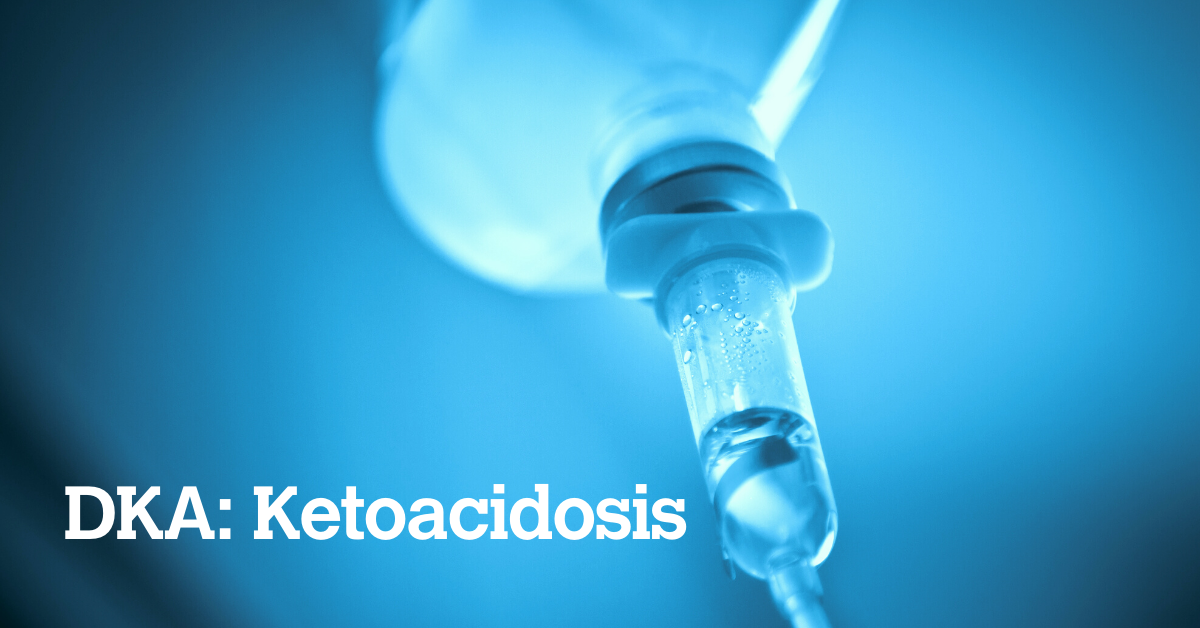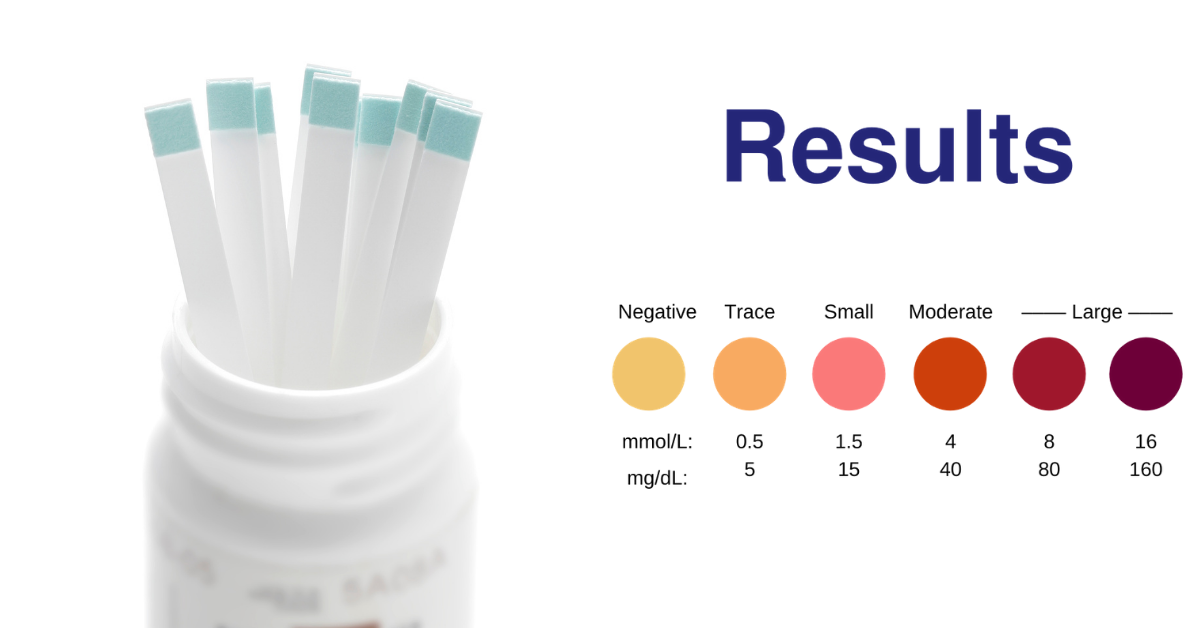
Diabetic Ketoacidosis (DKA) is a dangerous situation to be in. Find out what it is, how to treat it, and how to avoid it.
Ketones are something we hear about often these days in mainstream media thanks to “ketogenic” diets and “ultra-low-carb” lifestyles. In fact, our body produces ketones on a nearly daily basis -- starting when we are babies! But diabetic ketoacidosis (also known as DKA) is a life-threatening state that people with diabetes -- particularly type 1 diabetes -- will likely face a few times throughout their life.
Let’s take a closer look…
What are ketones?
Ketones are an acid produced by your body when insulin levels are low and your body is burning fat for fuel instead of blood glucose. In small amounts, ketones are not necessarily a bad thing.
In fact, the body creates ketones in small amounts to provide your body with fuel when insulin and glucose levels are not readily available. But just like you can have too much of a beneficial vitamin, too many ketones is extremely dangerous.
There are actually four types of “ketosis”:
- Diabetic ketoacidosis (DKA): This only occurs in people with type 1 diabetes, and a small percentage of people with type 2 diabetes mellitus with very low insulin levels. When your body has too little insulin, it’s forced to make ketones for energy but you can easily reach ketone levels that create a toxic, life-threatening environment. You’ll start feeling “ketotic” when ketone levels pass over 5 mmol/L, and much more so over 10 to 15 mmol/L. Diabetic ketoacidosis is accompanied often by severe nausea and other severe symptoms associated with hyperglycemia, or high blood sugars, along with ketone levels over 20 mmol/L. More on DKA later in this article!
- Nutritional ketosis: This type of ketosis is achieved through strict low-carb dieting, generally fewer than 20 to 30 grams of carbohydrate per day. With so little carbohydrate available, the body burns far more fat than normal for energy, resulting in ketone levels between 1 to 3 mmol/L.
- Starvation ketones: When you skip too many meals, or are intermittent fasting, starvation ketones are usually present. Many of us simply wake up in the morning with low levels of starvation ketones which clear as soon as you eat breakfast. Starvation ketones are essentially the same as nutritional ketosis and wouldn’t normally escalate to a life-threatening level -- but when combined with illness, they can contribute to the development and symptoms of DKA. That’s why it’s important to consume something with glucose (like gatorade) when fighting off illness, and take adequate insulin as directed by your healthcare team. Measure your ketones often to be sure they aren’t escalating!
- Illness or Infection-induced ketosis: People with diabetes need to be especially aware of this when you’re fighting off the flu or another virus, even the common cold. Simply put, the stress on your system can lead to ketone production, even when your blood sugar is in range. They’re usually easily cleared by consuming something like Gatorade (containing real glucose, for fuel) along with a slight increase in your prescribed insulin doses. It’s important to use urine or blood tests frequently for ketone levels when you’re sick!
How to measure ketones at home
Ketones are detected in your urine or your blood using urine test strips or a blood ketone meter. (Urine strips are the cheapest and simplest route, easy to find at any pharmacy.) To test your ketones with urine strips, you simply collect your urine in a bowl or cup and dip the end of the strip as directed on the bottle.
-
Light pink: small ketones
-
Medium pink: moderate ketones
-
Dark pink/magenta: large ketones

Dark pink or magenta is the first sign that your ketone levels have risen to dangerous levels. You should call your doctor and potentially treat this as a medical emergency. This is a sign of serious diabetic ketoacidosis and should be followed with a call to your doctor or a visit to your local urgent care.
A blood ketone meter is far more accurate, but for the sake of diabetes care, they’re not necessary. The range provided by urine ketone strips is adequate to tell you if you’re in need of emergent care or not.
What is diabetic ketoacidosis (DKA)
While it’s often thought that high blood sugar causes ketones, it’s really a lack of insulin that results in ketones. This is why people with type 2 diabetes don’t normally produce ketones, because they are still producing enough insulin to prevent ketosis even if it’s not enough to prevent high blood sugars.
For those with type 1 diabetes, DKA is a condition defined by a number of ketones in your bloodstream that overwhelms the body to the point of toxicity.
Often accompanied by high blood sugar levels above 250 mg/dL, and very likely if your blood sugar is over 300 mg/dL. However, if your blood sugar is 380 mg/dL because you ate pizza, and you took a lot of insulin for that pizza even if it wasn’t enough to keep your blood sugar in range, you likely wouldn’t have ketones just because your blood sugar is so high.
If you were diagnosed with type 1 diabetes, you likely had high levels of ketones. To officially be in the crisis state of “diabetic ketoacidosis,” your ketones would be accompanied by common symptoms of type 1 and type 2 diabetes including:
-
Extreme thirst
-
Frequent urination
-
Intense tiredness and fatigue
-
Vomiting (go to the emergency room, ASAP)
-
Sudden and inexplicable weight-loss (pre-diabetes diagnosis)
-
Blurry vision
-
Sour or fruity-smelling breath
-
Yeast infections
-
Sugar cravings
-
Dry bowel movements in diapers of young children
Risk factors and causes of DKA
If you've already been diagnosed with type 1 diabetes, here are some reasons why you might find yourself in DKA:
-
Diabetes technology failure in your pump or pod, preventing proper insulin delivery
-
Severely under-dosing insulin for a meal
-
Forgetting to take your insulin dose (especially background/basal insulin)
-
Using damaged insulin (ex: severe temperatures during winter or summer)
-
Battling illness like the flu or other common viruses
-
Another medication, like Invokana
It’s important to identify the cause of your moderate-to-large ketones or DKA as quickly as possible by paying attention to the warning signs. If it’s related to your diabetes technology, you’ll likely be advised by your healthcare provider to set-up a new infusion site for your pump.
Likely, your healthcare team will suggest adjusted insulin therapy to get insulin into your bloodstream as quickly as possible. But not all ketones can be managed at home. It’s very important to know when to manage them at home and when to visit the emergency department immediately.
Treating Diabetic Ketoacidosis
According to the American Diabetes Association, if left untreated, DKA can and will kill you. That’s why it’s crucial to know when it’s time to visit the nearest emergency department.
There’s no arguing that DKA is absolutely life-threatening, and should be treated with great concern and immediate action. If you’re feeling symptoms of ketoacidosis, follow these treatment steps:
- Check your blood sugar. Moderate ketone levels can sometimes be cleared on their own at home if you catch it early enough and the cause is something you have control over (like a failed pump infusion site).
- Hydrate. If you have small to moderate ketones, drinking water and replenishing electrolytes is a critical part of flushing them through your system in conjunction with taking more insulin as advised by your healthcare provider. Be careful, though, not to consume too much water too quickly as this can create too much pressure on your stomach and lead to vomiting. That’s why some ketones require intravenous fluids in order to rehydrate you without involving the stomach.
- Pay attention if you are experiencing abdominal pain. If you are nauseous or vomiting -- whether it’s from ketones or a stomach bug -- you should visit an emergency department immediately. Once you begin vomiting, it means two things: ketone levels have possibly become toxic, overwhelming your system to the point of being life-threatening. And secondly, it means you now face the risk of severe dehydration and severe low or high blood sugar. If you can’t keep fluids or food down, you need to visit the ER to receive a combination of hydrating fluids, insulin, and glucose intravenously to restabilize your entire bodily system. Staying home and trying to “wait it out” can lead to death. Go to the ER!
Monitoring your blood sugar and acting on the results are key for avoiding DKA. Get the supplies you need at affordable prices from Diathrive.

